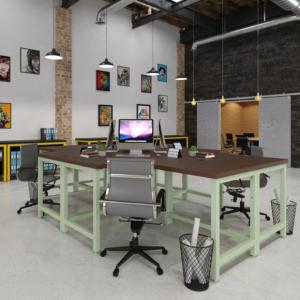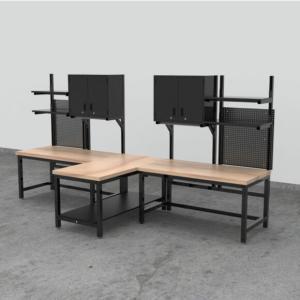
Find out how designers are taking advantage of AI in the design process – and how they avoid using AI for final design projects.
— Formaspace
AUSTIN, TEXAS, UNITED STATES, May 23, 2024 /EINPresswire.com/ — The Generative AI Arms Race Heats Up
AI software companies announced significant new product upgrades last week.
OpenAI, of which Microsoft is a major investor, presented GPT 4o, the newest version of their breakthrough ChatGPT generative AI tool, which claims to integrate synthetic video and image generation with its chat prompt functionality.
Not to be outdone, the following day, Google introduced major updates to its Gemini AI tools, including integration into many Google productivity apps, such as Gmail, Docs, and Slides, as well as a preview of an AI-powered “teammate” dubbed Project Astra. Google is also stepping into the synthetic video generation arena with VideoFX, a tool based on Google DeepMind’s Veo video generator to compete with OpenAI’s Sora.
Can Large Language Models And Other AI Tools Create Architectural And Product Designs?
While most business users may be more focused on the text generation capabilities of GPT-based AI software, professionals in the creative industries, such as architects, interior designers, and product/industrial designers, have been busy assessing how to approach generative AI tools that produce images and video, and how they could be integrated into their design workflow – if at all.
Some of the key products in this synthetic imagery generation space are:
Stable Diffusion (Stability AI)
DALL-E 3 (OpenAI)
Midjourney
Mistral AI
How do these tools create new imagery?
In a word, today’s generative AI tools don’t create imagery from scratch, instead, they synthesize new images based on snippets of millions of individual images they have been trained on.
For example, if you use Stable Diffusion (or one of the more specialized AEC products, such as InteriorAI, which uses Stable Diffusion internally), you are actually pulling imagery from a huge catalog of images, known as a Large Language Model (LLM). One of the models that Stable Diffusion relies on is called LAION.
Care to guess what was the biggest source of imagery used to create LAION?
Reportedly, it’s Pinterest.
Thus, you can well imagine when you ask Stable Diffusion (or InteriorAI) to create an image of an atmospheric, cozy café with soft lighting with a view of a garden, the result might remind you of a composite image created from a Pinterest mood board.
Given The Recent Lawsuits Over Creator’s Rights, Does Using AI Risk Falling Into A Legal Quagmire?
Creative professionals across multiple industries – from writers to graphic artists – have become outraged to learn that their works have been accessed (allegedly without permission) to train Large Language Models that in turn can quickly pump out “new” written documents, graphic designs, architectural renderings, or fine artworks.
Multiple lawsuits have been filed against generative AI software companies, including a prominent lawsuit in which the NY Times sued OpenAI and Microsoft for infringing on its copyrights by ingesting millions of its articles to train AI models. Legal experts agree that this is a new and untested challenge to existing trademark, copyright, and patent law, and it’s not yet clear how the courts will rule. Congress may ultimately step in to regulate aspects of the emerging conflict between new AI technologies and existing intellectual property (IP) rights.
Using AI As A Tool For Creative Inspiration
Given these potential IP legal issues, many prominent professional architects and product designers have elected to treat generative AI as a brainstorming tool for creative inspiration rather than relying on it to create designs that can be used as is.
This cautious approach makes sense for a couple of reasons.
First, the last thing that creators of a new building or a new car design need is a legal cloud hanging over the life of the project or end product, which could be in existence for many years or decades.
Second, experienced generative AI users will tell you that while these images may look good at first glance, today’s AI tools aren’t (yet) capable of addressing common, practical design concerns. For example, in the AEC space, generative AI software doesn’t have the knowledge to address basic practical design considerations, such as clear aisle and door locations for safe egress during an emergency or how to optimize the placement of important building services, such as plumbing stacks or HVAC chases.
Julia Solodovnikova
Formaspace
+1 800-251-1505
email us here
Visit us on social media:
Facebook
Twitter
LinkedIn
![]()
Originally published at https://www.einpresswire.com/article/714129655/ai-based-tools-are-now-being-used-for-design-of-commercial-interiors-and-consumer-products




